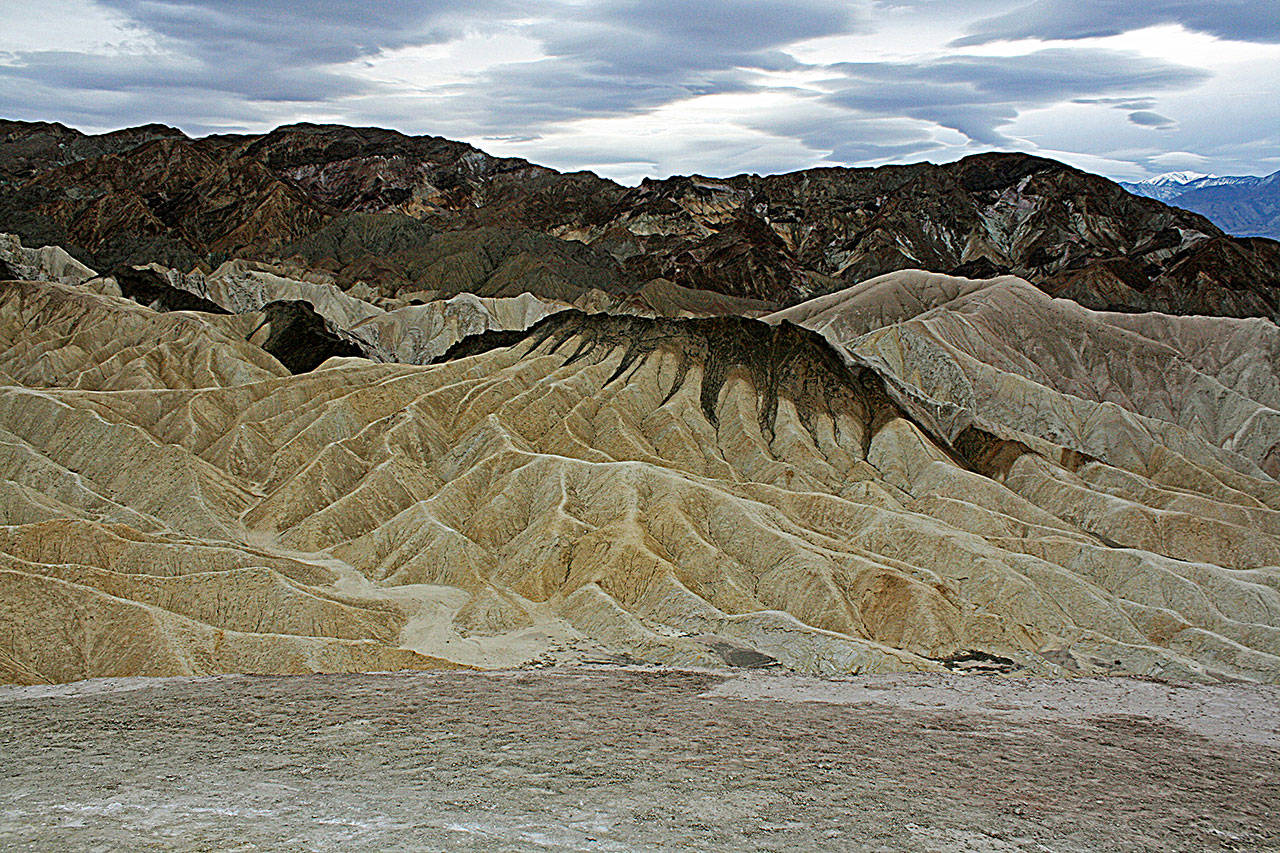By Paul Rogers
The Mercury News
SAN JOSE, Calif. — In the largest land conservation bill passed by Congress in 10 years, vast areas of California’s desert are headed for new protections that would prohibit mining, roads and off-highway vehicles, and enlarge two national parks, Death Valley and Joshua Tree.
The bill would designate 1.3 million acres of federal land across the American West as wilderness, the highest level of protection, establish four new national monuments, and set aside more than 600 miles of rivers from dams and other development.
In a Congress that has spent years in bitter partisan division, the legislation was an unusual point of agreement, passing the House and Senate with large bipartisan support.
If Trump signs the bill as expected — he has until March 16 to sign or veto it — it will represent a rare environmental accomplishment for his administration. For much of his presidency, Trump has worked to expand development of public lands and expand oil drilling.
He has proposed new offshore drilling off California, Oregon, Washington, and the Atlantic Coast, and pushed for new drilling in Alaska’s Arctic National Wildlife Refuge. He has worked to remove protections on millions of acres for the sage grouse, gray wolf and other at-risk species, and has signaled the United States will withdraw from the Paris Climate Agreement.
Whatever Trump’s feelings about California, the state is among the primary beneficiaries of the legislation.
The bill establishes 375,000 acres of new wilderness — an area nearly 13 times the size of San Francisco — in the Mojave Desert, most of it on land owned by the federal Bureau of Land Management, where mining, oil exploration and road building will be permanently banned.
“From desert tortoises to bighorn sheep, breathtaking wildflower blooms to iconic Joshua trees, the beauty of the California desert is unrivaled,” said Sen. Dianne Feinstein, D-Calif. “It’s a defining part of California’s landscape, and I’m proud of our work to ensure it remains that way for future generations to enjoy.”
The legislation also enlarges Death Valley National Park by 35,929 acres and Joshua Tree National Park by 4,518 acres, a goal of Feinstein’s for years.
It creates an 18,610-acre Alabama Hills National Scenic Area in the Alabama Hills of Inyo County, where over the last century, hundreds of Western TV shows and movies have been shot. And it adds 28 miles of the Amargosa River and the Whitewater River and Surprise Canyon areas of the Mojave Desert to protections under the National Wild and Scenic Rivers Act, which blocks dams and development.
In a compromise with off-road vehicle groups, the bill guarantees permanent access to 200,000 acres of Bureau of Land Management land in the desert where off-road vehicles are now driving.
“It’s very significant. This finds a nice balance between recreation and ecology,” said Peter Satin, director of land management at the Mojave Desert Land Trust in San Bernardino County. “You’ve got off-road vehicle access matched with expanded wilderness and national parks. The desert is a rich, multi-use landscape that can be enjoyed by everyone. It’s not an empty barren place. It’s full of value.”
The bill is 662 pages long and contains more than 170 separate measures, drafted by Republicans and Democrats. There are wilderness protections in Utah, New Mexico and Oregon, along with new protections for hunters on federal land, and a provision to allow native Alaskans who served in the Vietnam War to homestead up to 160 acres each in rural Alaska on BLM lands.
The bill also creates new national monuments to honor the Civil War, at Mill Springs Battlefield in Nancy, Kentucky; civil rights leaders Medgar and Myrlie Evers in Jackson, Miss.; the victims of the 1928 St. Francis Dam Disaster in Los Angeles County near Santa Clarita; and Jurassic National Monument, 850 acres of BLM land in Southern Utah famous for discoveries of dinosaur bones.
• The bill also includes expansion of Oregon Caves National Monument and Preserve to add 4,000 additional acres of federal land to the existing monument to better protect the larger watershed and the cave system. President William Howard Taft originally protected 480 acres of this area in 1909.
The bill passed 92-8 in the Senate. Those who followed it closely say the main draw, particularly for Republicans who in recent years have rarely supported new environmental laws, was a provision that permanently reauthorizes the nation’s most important parks funding law.
That law, the Land and Water Conservation Fund, uses royalties from offshore oil drilling to not only buy new land for national parks, forests and wildlife refuges, but also to provide millions of dollars every year in local and state grants to cities and counties for swimming pools, baseball fields, local parks, trails and boating marinas. The law, which is authorized to provide up to $900 million a year, had expired last September.
“Republicans know that their congressional districts were getting funding from the Land and Water Conservation Fund,” said Vicky Hoover, an advocate with the Sierra Club in San Francisco who worked for four years on the bill. “They didn’t want that money to stop flowing.”
“It’s a big victory, but it’s not a perfect bill. It contained some items that are bad for the environment,” Hoover said.
Among those, she cited the Alaska homesteading provision, and the off-road vehicle guarantees in some parts of the desert.
Overall, however, Hoover said the measure is key to preserving California’s environment. She noted that large crowds head every year to see wildflower blooms in the desert, and that expanding the protected areas preserves solitude, fragile plants and corridors for big horn sheep, desert tortoises, and other wildlife, which are critical for them to adapt to climate change.
“These places in the desert are spectacular,” she said. “For some people it’s more low-key than Yosemite. But the more California’s population expands and we develop more shopping centers and freeways, the more it’s important that we have these protected areas.”


